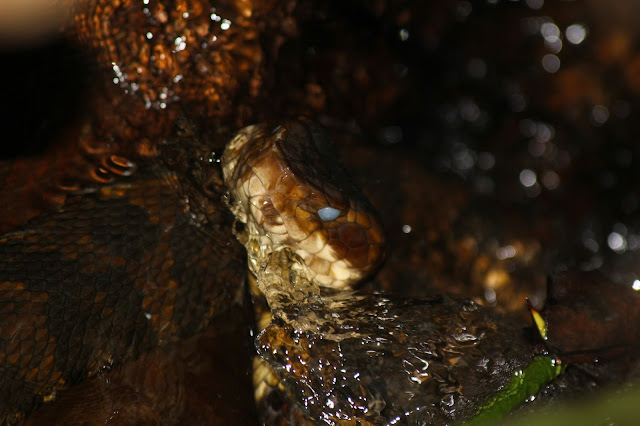Andrea's gone. In her wake, we enjoyed a week of mostly cooler temps, with intermittent showers and storms, culminating in a very strong band of storms Thursday which uprooted, snapped or violently pruned hundreds of trees in the area. In the aftermath of severe weather, a quiet walk in the woods around my brother Henry's property seems just the tonic for a storm-tossed soul.
June is prime time for the butterfly weed, Asclepias tuberosa, and this lovely specimen is living up to its name today, with a variety of nectar-loving arthropods out and about after the rain.
As with most of the showy wildflowers native to North Carolina, native Americans and early settlers have lent a plethora of common names to A. tuberosa, many of them with origins in folk medicine. You may hear this lovely summer bloomer called pleurisy root, chiggerflower, or orange milkweed, although she lacks the milky sap of most of the other Asclepias.
This hoverfly cleverly mimics a yellow jacket, but lacks a sting and is a nectar feeding aphid killer. It deposits its eggs on the stalks of aphid infested plants, and the larvae actively attack and consume the aphids.
Henry's creek bank is home to another of our summer blooming true orange wildflowers, Polygala lutea, or orange milkwort. These plants love the boggy area in Henry's ditch which flows down to "Cottonmouth Creek".
Lurking on the lip of the concrete pipe which transports the spillover from the rain-swollen pond across the road into Henry's creek is a six-spotted fishing spider, one of the largest spiders I'd ever encountered in the wild (until I spotted this one's furry gray cousin lurking in the shadows lower down!) The fishing spider, as I'm sure you guessed, is known to prey on small minnows and tadpoles in addition to the requisite insects.
Giving the spider a wide berth, I locate the Cottonmouth Creek trailhead, pull back the veil of catbrier and low-hanging limbs and quickly realize my brother's been a bit too busy of late to maintain the trail this year, and possibly last year as well! After a series of spine-tingling encounters with snaky-looking branches and detritus in the gloom of the dense underbrush, I carefully make my way to the bank of the creek and peer down into the tangle of roots and vines near the waterfall for the creek's namesake, the eastern cottonmouth, or water moccasin.
As I muscle my way through the final wall of dense foliage, I dislodge a 30 inch long pit viper from its perch on the black gum branch just above the creek bank, where it was quietly molting its skin and otherwise minding its own business. Startled, it thrashes through the tangled roots toward the water and briefly flashes the cottony white interior of its mouth for which it is famous.
Then it completes its slithering slide into the swiftly flowing waters of Cottonmouth Creek; pausing ever so briefly on the brink of the falls to peer vainly through blind eyes in the general direction of the intruder.
And I peer back, pulse racing, heart pounding, adrenaline coursing through my veins.
Fear subsiding with distance, I wonder.
Does the snake "feel"? If so, what?
Fear? Anger? Mild annoyance?
Perhaps the cool rushing waters of the stream sooth the old, dry, irritating skin that will soon relent and yield to the smooth shiny scales of a fresh coat of armor for this wild survivor, one of the ancient family of reptiles patrolling the banks of Cottonmouth Creek. Perhaps I've not worn out my welcome just yet, here in brother Henry's woods, along the banks of the cottonmouth's creek.










No comments:
Post a Comment